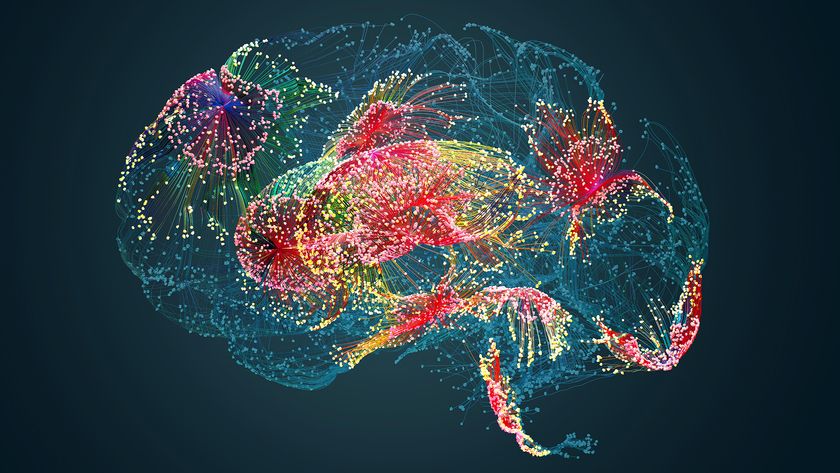Is Porn Bad For You? Santorum Brings Up Tricky Question

With a statement decrying the Obama administration's "blind eye" toward enforcement of federal obscenity laws, Republican presidential candidate Rick Santorum has brought the subject of pornography into the presidential campaign. But some of Santorum's statements about the ills of explicit material may not hold up.
In a statement first posted last week on his campaign website, Santorum cites "a wealth of research" demonstrating that pornography causes "profound brain changes" and widespread negative effects in both adults and children, including violence against women. There's no such evidence of brain changes, researchers say — though the question of pornography's harmfulness is still in some dispute.
"It's very easy if you want to support one side or the other, to pull a particular study," said Paul Wright, an assistant professor of telecommunications at Indiana University, Bloomington, who has studied sex in the media. "Anybody can support one side or another by simply isolating a particular study and talking about it."
Getting meta
Most experimental studies on the effects of pornography have focused on college students, given their easy proximity to the psychology lab. Looked at individually, these studies seem mixed. Some find that exposing young men to porn increases sexist attitudes and even a willingness to inflict pain, often tested by having the men inflict what they believe are real electric shocks on a woman. (The shocks are fake.) Other studies find little to no effect. [Sex Quix: Myths, Taboos & Bizarre Facts]
To pull this disparate research together, psychologists depend on meta-analyses, or studies that analyze data from multiple single studies. Using this technique, Wright said, the effects of pornography are "fairly clear."
"In experimental settings where actual aggressive behavior is measured as the outcome measure among males, both violent pornography and nonviolent pornography increased the probability of subsequent aggression," Wright told LiveScience.
Sign up for the Live Science daily newsletter now
Get the world’s most fascinating discoveries delivered straight to your inbox.
Complexities and caveats
Not all researchers put stock in experimental findings, however.
"The question became do these little tests that we're having these guys do [in the lab], do they really apply to real life?" said Chris Ferguson, a psychologist at Texas A&M University who studies the link between media and violent behavior.
In real life, of course, researchers can't carry out controlled experiments on pornography. One alternative strategy has been to look at sexual violence rates in countries right after pornography is decriminalized. These studies, many done by Milton Diamond, the director of the Pacific Center for Sex and Society at the University of Hawaii at Manoa, usually find that rates of sexual violence go down after pornography becomes more prevalent. Diamond sees this as evidence that pornography actually provides a catharsis for men who have sexually aggressive tendencies. [A Brief History of Porn]
"The majority of the pornography dissipates the arousal by masturbation and I think that works both for males and females," Diamond told LiveScience. "And usually after somebody masturbates and they have their orgasm, they're not as interested in sex as they were 10 minutes before, so I think it dissipates the interest to go out and do anything illegal."
There's no proof of this catharsis effect in the countrywide studies. It's not even possible to firmly link the drop in violence to pornography at all, given the large number of other factors that could play a role. The decriminalization of pornography could go hand-in-hand with other societal changes that influence sexual violence, Ferguson said. Women might even be influenced by a more porn-saturated society to accept violence against themselves and not report sexual aggression, Wright pointed out. Or some other, non-porn-related factor might play a role.
Nonetheless, some researchers see the countrywide correlations as telling.
"When you have people that are making these kinds of claims, that it's a major contributor to men's aggression toward women, it makes sense to look at if that societal data point exists," Ferguson said. [Internet Pornography Statistics]
High-risk men
If the laboratory studies are correct that pornography does increase male violence, it's a small to moderate effect, said Wright, who is quick to point out that he does not advocate censorship in any case.
Researcher Neil Malamuth of the University of California, Los Angeles, has found that exposure to pornography doesn't affect the average man. But for men with other risk factors that predispose them toward sexual violence, "it can add fuel to the fire," Malamuth said.
"It can make a person who perhaps has a certain proclivity, a certain inclination, a certain risk profile even more likely to act out in a sexually aggressive way," Malamuth said.
Risky characteristics include hostility toward women, a narcissistic personality, and a tendency to derive gratification from power and control over women, as well as background characteristics such as growing up in a violent home.
Perhaps different studies are capturing different proportions of men with these characteristics, which would explain the conflicting results, Malamuth said.
Positives of porn
The focus on the link between pornography and aggression glosses over other potential pitfalls of porn, including working conditions for the porn actors and the pressure on women to look or act like a porn star. But some researchers are taking a closer look at the potentially positive sign of sexually explicit media. In surveys, pornography users generally see porn as a boon, said Malamuth.
"Pornography may have many beneficial effects for some people in their sexual lives, and many don't see themselves as harmed in any way," Malamuth said.
In one study published this month in the International Journal of Intercultural Relations, University of Hawaii at Manoa researchers compared poses of women in photographs taken from popular pornography websites, magazines and porn-star portfolios, in Norway, the United States and Japan. These three countries were chosen because they fall in different portions of the United Nations' Gender Empowerment Measure, a measure of women's political and economic power in a nation. Norway is No.1 globally on the scale, the U.S. is No. 15, and Japan is No. 54.
The researchers compared "empowering" and "disempowering" poses in the popular pictorial pornography of each nation. An example of a disempowering photograph would be a woman tied up or contorted, with little care given to her own comfort. An empowering photograph would be the opposite, for example an unbound woman facing the camera with confidence.
The researchers found that disempowering photographs were equally common across all three countries. But Norway had the highest number of empowering photographs, followed by the U.S. The findings suggest that pornography may mirror the gender equality or lack thereof of society at large, according to study researcher Dana Arakawa, a doctoral student at the University of Hawaii at Manoa.
"It's a reflection of what our culture produces to show what is sexy about women or what should be considered a sexual ideal," Arakawa told LiveScience. The fact that relatively equal Norway exhibits more examples of "empowering" images of sexual women is heartening, Arakawa said. Most Americans have a vision of porn stars as stereotypically pouting Playboy bunnies, but that view of sexuality is limited in scope, she said.
"There is variety," Arakawa said. "Pornography isn't just what we know of in the U.S."
You can follow LiveScience senior writer Stephanie Pappas on Twitter @sipappas. Follow LiveScience for the latest in science news and discoveries on Twitter @livescience and on Facebook.

Stephanie Pappas is a contributing writer for Live Science, covering topics ranging from geoscience to archaeology to the human brain and behavior. She was previously a senior writer for Live Science but is now a freelancer based in Denver, Colorado, and regularly contributes to Scientific American and The Monitor, the monthly magazine of the American Psychological Association. Stephanie received a bachelor's degree in psychology from the University of South Carolina and a graduate certificate in science communication from the University of California, Santa Cruz.











